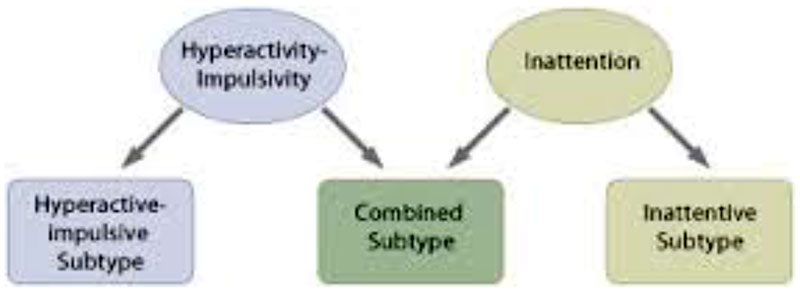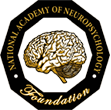ADHD is a neurodevelopmental disorder marked by a pattern of inattentive and/or hyperactive-impulsive symptoms. These symptoms begin in childhood (prior to age 12), and are present in more than one domain (school, work, social). These symptoms must be severe enough to interfere with or reduce the quality of social, academic, or occupational functioning. Additionally, these symptoms must not be better accounted for by another disorder. There are many possible causes of difficulty with attention, including medical conditions, psychopathology, and lifestyle factors. The timeline of symptoms and generalizability to different domains are therefore very important when determining if attentional difficulties are consistent with ADHD. ADHD is most often diagnosed in childhood, but can be diagnosed in adults whose history supports the diagnosis.
Symptoms of ADHD
ADHD symptoms can be broken down into two domains: inattention and hyperactivity/impulsivity.
| INATTENTION | HYPERACTIVITY/IMPULSIVITY |
| Fails to give close attention to details, makes careless mistakes | Fidgets with or taps hands or feet, or squirms in seat |
| Has trouble holding attention on tasks or play activities | Leaves seat in situations where remaining seated is expected |
| Does not seem to listen when spoken to directly | Often runs about or climbs in situations where it is not appropriate (for adolescents and adults – feeling restless) |
| Does not follow through on instructions and fails to finish tasks | Unable to play or take part in leisure activities quietly |
| Has trouble organizing tasks and activities | Is “on the go” acting as if “driven by a motor” |
| Avoids, dislikes, or is reluctant to do tasks that require mental effort over a long period of time | Talks excessively |
| Loses things necessary for tasks and activities | Blurts out an answer before a question has been completed |
| Is easily distracted | Has trouble waiting his/her turn |
| Is forgetful in daily activities | Often interrupts or intrudes on others |
Subtypes of ADHD
There are three subtypes of ADHD based on the observed and reported symptoms.

Treatment for ADHD
Treatment for ADHD can include cognitive behavioral therapy (CBT) and/or medication. Cognitive behavioral therapy can help individuals with ADHD develop skills to help improve their attentional and executive functioning abilities. CBT can be used to help develop the skills and habits necessary to improve time management, planning and organization, self-regulation, impulse control, and stress management. Medication may be used to mitigate ADHD symptoms. Psychostimulants are the most commonly prescribed medication for ADHD, however nonstimulant medications may also be prescribed.


